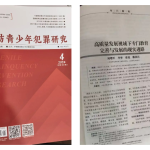Building upon the foundational understanding of how symbols of power influence our perceptions, it is essential to recognize that symbols extend beyond authority and serve as vital elements in constructing and expressing cultural identities. While power symbols often communicate hierarchy and control, their evolution and integration into cultural narratives reveal a deeper layer of societal meaning. This article explores how symbols shape collective identities, embed shared values, and adapt across cultural and historical boundaries, thereby influencing our perceptions on multiple levels.
1. Introduction: From Perception to Cultural Identity — Exploring the Next Layer of Symbolic Influence
Symbols are not static; they are dynamic carriers of meaning that evolve within cultural contexts. While initial perceptions of symbols may focus on their role in establishing authority or hierarchy, their deeper influence lies in how they contribute to shaping collective identities. Understanding this transition from perceiving symbols as mere markers of power to recognizing them as foundational elements of cultural identity provides a richer comprehension of societal dynamics. This layered perspective underscores the importance of symbols as tools for both maintaining tradition and fostering cultural cohesion.
2. The Evolution of Power Symbols and Their Cultural Significance
a. Historical transformation of symbols from authority markers to cultural icons
Historically, symbols such as crowns, scepters, and military insignia primarily signified authority and social hierarchy. Over time, many of these symbols have transcended their original context, becoming cultural icons that embody national identity or collective pride. The crown, for example, once represented monarchical authority but now often symbolizes sovereignty and cultural heritage, as seen in national emblems and logos. This transformation illustrates how symbols can shift from markers of power to inclusive representations of cultural unity.
b. How societal shifts redefine the meaning and usage of symbols
Major social changes—such as democratization, globalization, and technological innovation—alter the way symbols are perceived and employed. For instance, the swastika, once an ancient symbol of good luck, was appropriated by the Nazi regime, drastically changing its meaning in the public consciousness. Conversely, symbols like the rainbow flag have gained new significance as icons of social movements advocating for LGBTQ+ rights. These shifts demonstrate how societal values and power dynamics influence the reinterpretation and reintegration of symbols into cultural narratives.
c. Case studies of symbols that transitioned from power indicators to cultural emblems
| Symbol | Original Power Role | Cultural Significance Today |
|---|---|---|
| Eagle | Symbol of imperial authority (e.g., Roman Empire) | National emblem of the United States, representing strength and freedom |
| Olive Branch | Military victory and peace negotiations | Universal symbol of peace and reconciliation |
3. Symbols as Cultural Narratives: Embedding Identity and Values
a. How symbols convey collective stories and shared histories
Symbols serve as visual representations of collective stories that define a community or nation. The Statue of Liberty, for example, embodies ideals of freedom and democracy rooted in American history. Similarly, the cherry blossom in Japan encapsulates the transient nature of life and cultural appreciation for beauty. These symbols function as storytelling devices, transmitting shared histories and values across generations.
b. The role of symbols in transmitting cultural values across generations
Cultural symbols act as repositories of societal values, transmitting core principles such as justice, resilience, or community through visual cues. For instance, the Indian lotus signifies purity and spiritual awakening, reinforcing values central to Hindu philosophy. Educational rituals, national holidays, and festivals often reinforce these symbols, ensuring their relevance persists through cultural continuity.
c. Examples of symbols that encapsulate national or community identity
- Maple Leaf: Canada's national symbol representing its natural landscape and identity.
- Red Ensign: Historically used as a symbol of British colonial influence, now part of the Union Jack in UK flags.
- Mapuche Chakwo: Indigenous emblem representing resilience and cultural sovereignty in Chile.
4. The Semiotics of Cultural Symbols: Meaning Beyond Power
a. Analyzing symbols through semiotics to understand layered meanings
Semiotics—the study of signs and symbols—provides a framework for decoding the multiple layers of meaning embedded in cultural symbols. A symbol like the swastika, for example, carries different connotations depending on cultural context: in Hinduism, it represents auspiciousness, while in Western contexts, it is associated with hate and extremism. Recognizing these nuances helps us understand how symbols communicate complex messages beyond their surface appearance.
b. How cultural context alters the interpretation of symbols
Context is critical in interpreting symbols. The red circle in Japan’s flag symbolizes the sun and national identity, whereas in other cultures, a red circle might have different meanings or connotations. This variability underscores that symbols are fluid, often loaded with layered meanings that shift across cultural boundaries.
c. The ambiguity and fluidity of symbols in cultural narratives
Many symbols are inherently ambiguous, allowing for multiple interpretations that evolve over time. The peace sign, for example, originated in the anti-nuclear movement but has since become a universal gesture for harmony, protest, or even fashion. This fluidity enables symbols to adapt to new cultural contexts, reinforcing their role as dynamic elements in societal storytelling.
5. Symbols and Subcultures: Constructing Unique Cultural Identities
a. How marginalized groups adopt and adapt symbols to forge identity
Subcultures often repurpose mainstream symbols to express their unique identity or resist dominant narratives. For instance, the punk movement reappropriated safety pins and anarchist symbols to symbolize rebellion and non-conformity. Similarly, LGBTQ+ communities have adopted rainbow colors as symbols of pride and solidarity, transforming them from simple visual cues into powerful markers of identity and resistance.
b. The role of symbols in subcultural cohesion and differentiation
Symbols act as unifying markers within subcultures, fostering a sense of community. At the same time, they differentiate groups from mainstream society and other subgroups. For example, specific fashion accessories, colors, or logos serve as signals of belonging or differentiation, reinforcing cultural boundaries and shared values within the subculture.
c. Examples of subcultural symbols influencing mainstream perceptions
- Graffiti Art: Originally a subcultural expression, it has become mainstream in urban branding and fashion.
- Skateboard Symbols: Logos and styles from skate culture influence global youth fashion and marketing.
- Anime Iconography: Japanese animation symbols now shape global pop culture and consumer products.
6. The Impact of Globalization on Cultural Symbols
a. The spread and transformation of symbols across cultures
Globalization accelerates the diffusion of symbols, leading to hybrid meanings and new cultural interpretations. The Olympic rings, for example, symbolize the union of continents, but their design and symbolism have been adapted to reflect regional identities and modern values across different countries. This process fosters interconnectedness while also posing challenges to traditional meanings.
b. Cultural appropriation versus appreciation: redefining symbolic boundaries
The exchange of symbols can sometimes blur lines between appreciation and appropriation. When fashion brands incorporate indigenous motifs without understanding their significance, it can lead to cultural insensitivity. Conversely, respectful appreciation can promote cross-cultural understanding and preserve the relevance of symbols in a globalized world.
c. The power dynamics in the global exchange of cultural symbols
Power relations influence which symbols are adopted or commodified in global markets. Dominant cultures often shape the narrative around symbols from marginalized groups, impacting their authenticity and perception. Recognizing these dynamics is crucial for fostering respectful cultural exchanges.
7. From Symbols to Actions: How Symbols Inspire Cultural Movements
a. The mobilizing power of symbols in social and political activism
Symbols can galvanize collective action, serving as rallying points for social movements. The raised fist, for example, has become an enduring symbol of resistance and solidarity across various struggles for justice. Such symbols distill complex messages into a single, powerful image that motivates collective effort.
b. Symbols as rallying points for collective identity and resistance
When shared by a community, symbols foster a sense of unity and purpose. The pink triangle, once a badge of shame, was reclaimed by LGBTQ+ activists as a symbol of resilience and pride, transforming its narrative from oppression to empowerment.
c. Case studies of iconic symbols fueling cultural change
The Black Lives Matter movement adopted the hashtag and symbolic imagery to draw attention to racial injustice, mobilizing millions worldwide. Similarly, the rainbow flag has become emblematic of the fight for LGBTQ+ rights, demonstrating how symbols can encapsulate and propel social change.
8. Reconnecting to Power: How Cultural Symbols Reinforce or Challenge Authority
a. Symbols as tools for maintaining cultural cohesion or dissent
Symbols can serve to uphold or challenge authority depending on their context and usage. National flags can unify citizens, but they can also become symbols of protest when used in dissent. The Tiananmen Square protests, for example, used the image of the Goddess of Democracy as a symbol of resistance against authoritarian rule.
b. The dynamic interplay between cultural identity and perceptions of authority
As cultural identities evolve, so do perceptions of authority. Symbols that once signified allegiance may be reinterpreted as tools of resistance. Conversely, authorities may manipulate symbols to reinforce their legitimacy, as seen in state-sponsored national celebrations or propaganda.
c. Examples where cultural symbols either uphold or undermine existing power structures
- Statue of Saddam Hussein: Used to reinforce regime power, later toppled symbolizing dissent.
- Martin Luther King Jr.'s "I Have a Dream" Speech: The imagery and symbols from this speech challenged racial segregation and injustice.
9. Conclusion: The Interplay Between Power and Cultural Identity — The Continuing Evolution of Symbols
In summary, symbols are powerful conduits that shape and reflect cultural identities while being shaped by societal changes and power dynamics. Their capacity to convey complex narratives, inspire movements, and challenge or uphold authority underscores their central role in societal development. Recognizing the layered meanings and contextual fluidity of symbols allows us to better understand perceptions and the ongoing evolution of cultural identities. As we have seen, the journey from symbols of authority to cultural emblems exemplifies their profound influence on how societies perceive themselves and others, further emphasizing the importance of studying symbols through a nuanced, contextual lens.


.png)


















